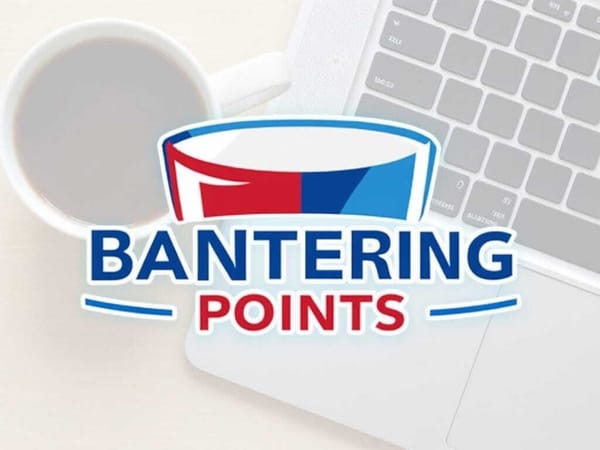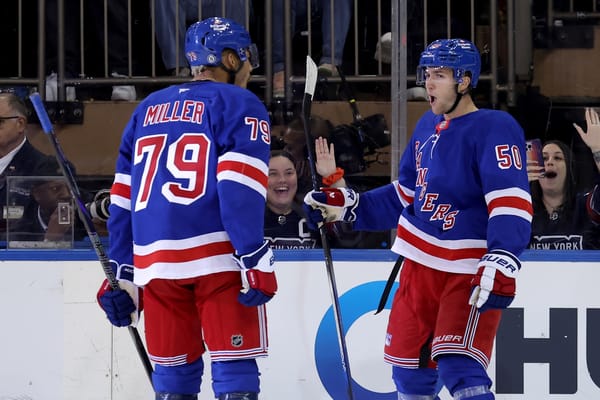Bridging the Gap: Short-Term Options for the 2019-20 Rangers
The future is bright, but the budding Blueshirts need to walk before they can run. A stopgap or two could be helpful in the interim.
A new era of New York Rangers hockey is on the horizon — one designed by fortune to be spearheaded by Kaapo Kakko, and reinforced by a star-studded cast of supporting actors including K’Andre Miller, Vitali Kravtsov, Igor Shesterkin, and more.
For many of them — with jobs to lose in training camp next September — the future is now. Kakko, Kravtsov, Shesterkin, and Adam Fox, for example, are all near-locks to make the 2019-20 team out of the gate. But development is still the name of the game, and most of the baby Rangers are still a season or two away.
This mild delay to the starts of their NHL careers thus necessitates at least a handful of stopgaps to plug the holes in the interim while the rest of the youngsters cut their teeth at lower levels.
As it turns out, according to Larry Brooks of the New York Post, this is exactly the market the Rangers are expected to be players in this July:
Simmonds seeking long-term deal that he will likely get, so that eliminates Rangers. Zuccarello apparently will be able to command a 5-year deal, so there will be no reunion. NYR would ideally like to keep UFA commitments to two years, if not one.
— Larry Brooks (@NYP_Brooksie) June 25, 2019
This self-imposed term cap would obviously be waved for the likes of Artemi Panarin, who, according to Pierre LeBrun, will reportedly choose between the Isles, Panthers, and Blueshirts as early as next Monday. But whether or not the Russian star decides to call Manhattan home for the foreseeable future, the Rangers won’t be facing a depleted market for shorter-term solutions.
The practice, in fact, is one Jeff Gorton has a decent track record with, having made low-risk, short-term investments in players like Michael Grabner, Viktor Stalberg, Paul Carey, and Fredrik Claesson — all of whom showed varying levels of success in New York — since being named Rangers’ GM in 2015.
The 2019 free agent market — appended by late non-qualified restricted free agent entries to it — could bear similar fruit when the “frenzy” kicks in six days from now.
Perhaps Brian Boyle would be open to a second act on Broadway? The 34-year-old isn’t getting any younger, but has maintained quality scoring levels for a depth player over the last three years in which he’s split time between Tampa Bay, New Jersey, and Nashville respectively. Moreover, Boyle is renowned for his leadership — a major facet the Rangers won’t fail to account for as they attempt to transition numerous fledglings into full-time, contributing NHLers.
According to the twins over at Evolving Wild, who released their 2019 contract projections back in in May, Boyle could be earmarked for an extremely reasonable one-year ticket worth around $1.25 million.
Boyle was actually suggested as a target by Brooks in a recent column, as was another option in Garnet Hathaway — a 6’2” right wing with agitating qualities and a physical game that would lend itself to a traditional fourth-line role.
According to the twins, Hathaway projects to earn a three-year deal worth around $1.3 million per year — a monetary value the Rangers could probably improve on in exchange for one fewer year on a would be deal.
On that same rugged front, there’s now an increased likelihood (though shy of a guarantee) that 24-year-old Ryan Hartman — a former 30th overall pick of Chicago’s back in 2013 — could make it to the free agent market at an unusually young age now that the Stars opted not to extend him a qualifying offer.
Sean Shapiro of The Athletic did note that Dallas still plans to negotiate with him ahead of the open market, but like with Zuccarello, the call of it could be all too tempting to avoid entirely.
Would a two-year, $6 million offer be enough to sway Hartman — who’s style would surely play well with David Quinn’s philosophies — to join a scrappy, still-rebuilding New York team?
What about 24-year-old Austrian-born Slovak, Marko Dano? The Winnipeg Jets opted not to qualify the versatile forward, who can probably be had for a million dollars or less on a show-me-style contract.
Dano plays a straight-line game from any forward position and could bring quality scoring and a 200-foot game at a bargain price.
Marko Dano would be smart. The Rangers could use a smart, defensive forward. Especially because he can play center. https://t.co/RA3GhRSmFs
— Adam Herman (@AdamZHerman) June 25, 2019
So could Sven Andrighetto, 26, who also failed to receive a qualifying offer from his soon-to-be ex-Avalanche squad. Despite his smaller frame, his creativity and scoring touch could help to chip in the odd goal at a very manageable price. The twins suggest a two-year deal at just shy of $1.4 million per.
Or maybe Gorton looks farther West for help? Nick Cousins, who will turn 26 in July, spent the last four seasons in Arizona, who walked away from the would be arbitration-eligible forward.
Cousins, who was originally drafted by the Flyers, put up a career-best 25 point season in the desert. His in-your-face style and ability to play both center or wing could make him a valuable bottom-six investment if he’s willing to sign a two-year ticket.
The options certainly won’t end here for Gorton and the Rangers, who will no doubt comb over the market in its entirety, exploring numerous pathways and possibilities to improve the team’s roster ahead of training camp.
Though it’s unlikely that any of these players would likely be counted on in the big picture, their ability to help in patching the holes today make them valued targets nonetheless — especially if the Rangers widen those gaps by opting to trade the likes of Chris Kreider, Jimmy Vesey, and/or Vladislav Namestnikov to add assets to the rebuild cache.
Short-term help is still help, and the Rangers will need it as they continue to inject promising young talents along the way. Last year there were examples of youngsters — Brett Howden most notably — hitting the proverbial rookie wall. The right short-term veterans can help in alleviating similar fatigue for this season’s youngsters.
It’s in the organization’s best interest to allow the potential stars of tomorrow to grow at their own pace. By having adequate stopgaps in place to eat minutes and take tough assignments during a strenuous 82-game schedule, the Rangers would be employing a solid strategy; one that could even allow the team to re-assign a fledgling or two to Hartford as needed.




